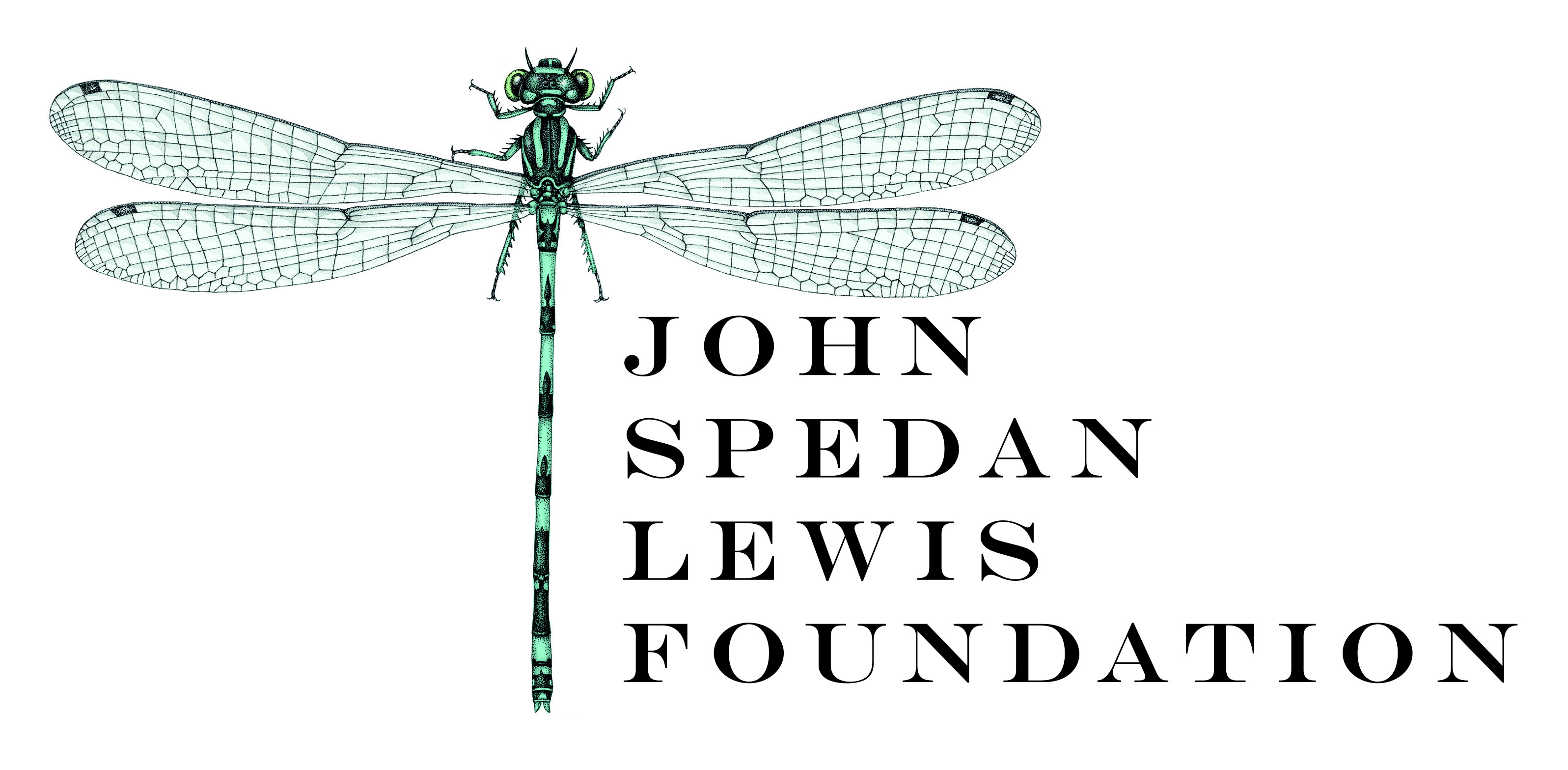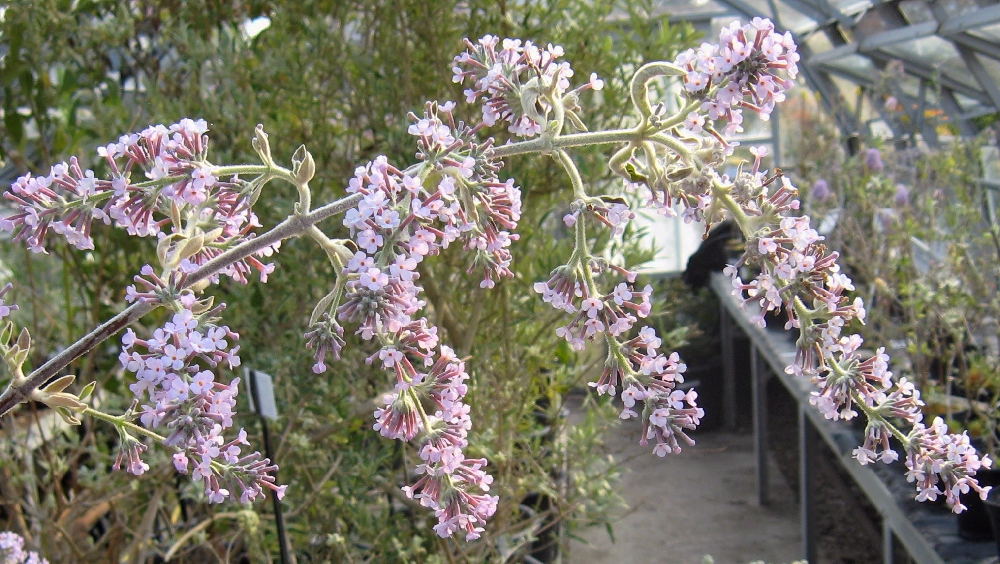Buddleja crispa
Sponsor
Kindly sponsored by
The John Spedan Lewis Foundation

Credits
Andrew Large (2021)
Recommended citation
Large, A.T. (2021), 'Buddleja crispa' from the website Trees and Shrubs Online (treesandshrubsonline.
Genus
Common Names
- Himalayan Butterfly Bush
Synonyms
- Buddleja acosma Marquand
- Buddleja agathosma Diels
- Buddleja agathosma var. glandulifera Marquand
- Buddleja crispa var. amplexicaulis Z.Y. Zhang
- Buddleja crispa var. dicipiens Schmidt
- Buddleja crispa var. farreri (Balf. f. et W.W. Sm.) Hand.-Mazz.
- Buddleja crispa var. grandiflora (C. Marquand) S.Y. Pao
- Buddleja crispa var. glandulifera (C. Marquand) S.Y. Pao
- Buddleja eremophila W.W. Sm.
- Buddleja farreri Balf. f. et W.W. Sm.
- Buddleja hastata Prain ex Marquand
- Buddleja incompta W.W. Sm.
- Buddleja praecox Lingelsh.
- Buddleja sterniana A.D. Cotton
- Buddleja tibetica W.W. Sm.
- Buddleja tibetica var. farreri (Balf. f. et W.W. Sm.) Marquand
- Buddleja tibetica var. glandulifera Marquand
- Buddleja tibetica var. grandiflora Marquand
- Buddleja tibetica var. truncatifolia (Lévl.) Marquand
- Buddleja truncata Gagnep.
- Buddleja truncatifolia Lévi
- Buddleja whitei Kraenzlin.
Other taxa in genus
- Buddleja albiflora
- Buddleja alternifolia
- Buddleja araucana
- Buddleja asiatica
- Buddleja auriculata
- Buddleja caryopteridifolia
- Buddleja colvilei
- Buddleja cordata
- Buddleja crispa × lindleyana
- Buddleja curviflora
- Buddleja davidii
- Buddleja delavayi
- Buddleja fallowiana
- Buddleja fallowiana × davidii
- Buddleja FLUTTERBY™ Series
- Buddleja forrestii
- Buddleja globosa
- Buddleja glomerata
- Buddleja japonica
- Buddleja lindleyana
- Buddleja LO AND BEHOLD® Series
- Buddleja longiflora
- Buddleja loricata
- Buddleja × luteolufaucia
- Buddleja macrostachya
- Buddleja marrubiifolia
- Buddleja megalocephala
- Buddleja 'Miss Ruby'
- Buddleja 'Morning Mist'
- Buddleja myriantha
- Buddleja New Dwarf Hybrids
- Buddleja nivea
- Buddleja officinalis
- Buddleja 'Orange Sceptre'
- Buddleja paniculata
- Buddleja × pikei
- Buddleja 'Pink Delight'
- Buddleja saligna
- Buddleja 'Salmon Spheres'
- Buddleja salviifolia
- Buddleja 'Silver Frost'
- Buddleja speciosissima
- Buddleja 'Summer Beauty'
- Buddleja virgata
- Buddleja × wardii
- Buddleja × weyeriana
- Buddleja × weyeriana Hybrids
- Buddleja 'Winter Sun'
Shrubs 0.2–5 m tall. Branchlets subterete to quadrangular, densely stellate tomentose. Stipules suborbicular to cordate, 0.3–3 cm. Leaves opposite, very variable in shape and size; petiolate, sessile, or connate-perfoliate; petiole often winged; leaf blade ovate, triangular or narrowly so, 1–20 × 0.5–8 cm, densely tomentose, becoming glabrescent especially on the upper surface, base mostly rounded to cordate, margin crenate, serrate, dentate, or shallowly lobed, apex acuminate, acute, or obtuse. Inflorescences variable: terminal, paniculate or spicate cymes, 1–20 × 1–15 cm; bracteoles variable, several to many, almost linear, 0.4–2.5 cm. Calyx campanulate, 3–9 mm, outside densely stellate tomentose and with some glandular hairs, inside often glabrous; lobes triangular, 0.8–1.7 mm. Corolla lilac, or less often violet or purple, with an orange throat, 0.7–1.6 cm, outside densely to sparsely stellate tomentose and with glandular hairs or entirely glabrous, inside with a pilose belt, tube 6–12 × 1–2 mm; lobes suborbicular, 1.2–4 × 1.2–4 mm. Stamens inserted slightly above or at middle of corolla tube; anthers sessile. Pistil 3–5 mm. Ovary ovoid, 1.2–2 mm, stellate tomentose. Style 1.5–2.5 mm, base stellate tomentose; stigma clavate. Capsules ellipsoid, 5–6 × 2–3 mm, stellate tomentose. Seeds ovate-oblong, approx. 1 mm diameter, unwinged. (Leeuwenberg 1979; Li & Leeuwenberg 1996).
Distribution Afghanistan Bhutan China Gansu, Sichuan, Xizang, Yunnan India North Pakistan
Habitat Dry river beds, stoney slopes and steep valley sides, exposed cliffs, thickets, 1400–4300 m asl.
USDA Hardiness Zone 8-9
RHS Hardiness Rating H4
Conservation status Not evaluated (NE)
Taxonomic note Leeuwenberg controversially sunk several species under B. crispa. Recent research has re-established one species, B. caryopteridifolia, as distinct (Zhang et al. 2014) and this is therefore treated here as a species in its own right. The names B. agathosma, B. farreri, B. sterniana, and B. tibetica are still frequently encountered in horticulture, but are treated here as synonymous with B. crispa.
Buddleja crispa is a highy variable species and has therefore collected an unusually large number of synonyms. The plants here considered as B. crispa are divergent, both in general morphology and phenology. All share remarkably similar characteristics in the flowers, with the variation in other features attributed mostly to environmental factors; it was on this basis they were lumped as a single, highly variable species with no recognised subspecies or varieties by Leeuwenberg (1979).
Later research showed a general pattern of genetic isolation in B. crispa across south-western China, which could be inferred by their geographical separation; Yue et al. (2012) found population subdivisions and genetic variation perfectly reflected geography. This could account for the number of distinct types known to horticulture. It may still be expedient, therefore, to consider the different types both held in collections and available in the horticultural trade, whilst acknowledging they do indeed represent a single yet highly variable species. Generally, the flowers are pale pink to lilac and the deciduous foliage silvery or glaucous. The types agathosma, farreri and sterniana mostly vary from one another only in scale. The type crispa appears to be an outlier with regard to phenology and little else, and the type tibetica a local adaptation to a xeric lifestyle.
crispa type – a summer flowering B. crispa (June-July in the UK) whose flowering can, with dead-heading, persist in to the autumn, an unusual feature amongst B. crispa types. Plants of this type in cultivation possibly all derive from a specimen in the now-defunct Aldenham collection (Hertfordshire, UK), origin unknown (Bean 1976). It forms a round, scrubby, medium-sized shrub. The contrast between the felted, silvery heart-shaped leaves and the soft pink flowers is considered particularly pleasing (Stuart 2006). The cultivar B. crispa ‘Hulmoon’ (syn. ‘Moondance’) does not appear to be significantly different to this type on current evidence. This type has also recently given rise to a variegated sport, discovered at Stone House Cottage, Worcestershire, UK.
agathosma type – the largest of the B. crispa types currently in cultivation, forming a large woody shrub or small tree. The leaves are toothed, felted and can be large, up to 30 cm in length. The corolla is also larger than average, with the individual flowers up to 10 mm in diameter, but most flower parts, notably the ovary, are identical in form and scale to other types. The large inflorescences are predominantly terminal, or more occasionally axillary, emerging in the spring. Holotype specimens of B. agathosma, reassigned to B. crispa, are preserved in herbarium collections.
farreri type – named for Reginald Farrer, who collected herbarium specimens of the type in Gansu province in 1915, some sources assign this type varietal status as B. crispa var. farreri (Bean 1976), although this is unsupported by the current taxonomy. This type varies very little from type agathosma, other than having smaller foliage, a lesser diameter to the corolla, and forming a smaller tree or shrub at maturity. Unusually, it is highly self-fertile (Cotton 1947). Holotypic specimens of B. farreri, reassigned to B. crispa, are preserved in herbarium collections.
sterniana type – plants currently cultivated are clones of a specimen that grew at Highdown Gardens, once the property of Colonel Stern, for whom the type was named; this was grown from seed collected by George Forrest, most likely originating in Yunnan (Cotton 1947). This type has leaves more diminutive than agathosma or farreri, and a more branched habit, otherwise it resembles them in most features. Holotypic specimens of B. sterniana, reassigned to B. crispa, are preserved in herbarium collections.
tibetica type – Scottish botanist William Wright Smith named and described this type from specimens found in Xizang (Tibet) at an altitude of 3400 m; the first plants were introduced into cultivation in 1931 labelled as B. hastata (another B. crispa synonym). It forms a sparse and twiggy shrub up to 4 m tall. The foliage is felted, variable in size and shape, with an upper surface covered by a persistent greyish-white bloom, although eventually becoming glabrous; the undersides have a thick white down and prominent venation. The axillary inflorescences appear in the early spring on the previous year’s growth. The lilac to lavender flowers fade gradually after they open, sometimes becoming almost white (Cotton 1947). Holotypic specimens of B. tibetica, reassigned to B. crispa, are preserved in herbarium collections.
All types of Buddleja crispa originate from the dry slopes of Himalayan valleys. Ex situ, all forms of this species require well-drained soil, preferably quite dry over the winter, and abundant sun in summer. The species is deciduous, and many types flower before the leaves appear in spring (the flower buds are held dormant over winter); such plants exposed to heavy frost and cold winds are less likely to flower abundantly. All types can be grown in the open given sufficient shelter, but perform better as wall-shrubs, south-facing and in rain-shadow. Hardiness increases with maturity and size; excess water or humidity are more inimical to this species than absolute temperature.








